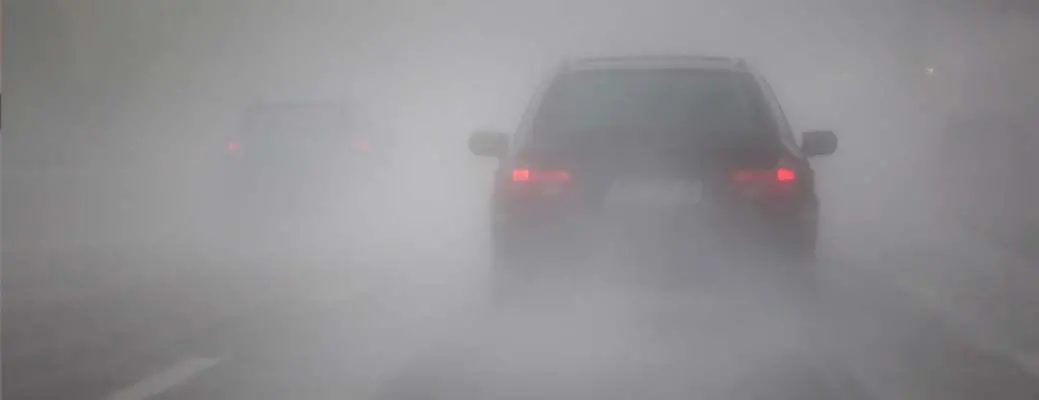Last Updated on February 5, 2024 by John Robinson
Clear weather conditions are ideal for driving, since drivers are able to observe and respond to potential hazards quickly and effectively. However, it is sometimes necessary to travel despite less-than-ideal weather patterns. Whether you need to drive in heavy rain, coastal fog, or even snow, the prevalent environmental conditions may make your trip more dangerous than usual. In this article, we discuss some of the most common types of weather that may result in reduced visibility for drivers, along with tips you can implement to protect yourself and your passengers.
How Do Weather Conditions Increase the Risk of a Crash?
Poor weather is a factor in approximately one in five accidents in the United States. Most weather-related crashes occur during rainfall or on slick pavement. Other environmental factors that are particularly likely to cause a collision are:
- Sleet or snow
- Icy pavement
- Fog
- Dust storms
- Wildfire smoke
Poor weather is particularly dangerous for large trucks. Commercial vehicles weigh substantially more than sedans, personal trucks, and SUVs, which means that they take substantially more time and space to come to a full stop. During periods of low visibility, it can be challenging for truck drivers to detect and respond to situations quickly enough to avoid a collision. When a car is struck by a large truck, the sheer size and weight difference between the two vehicles often results in “massive injuries [or] death in a split second.”
Driving in Fog
According to statistics sourced from the U.S. Department of Transportation, more than 38,700 crashes occur in fog annually. Lack of visibility is a factor in most of these accidents, as fog decreases the amount of time drivers have to see and react to hazards on the road. It takes most drivers more than a second to see a potential threat, respond to the danger, and hit their brakes under normal circumstances. When a driver’s vision is limited by fog, rain, or snow, the amount of time it takes to come to a complete stop increases.
If you find yourself driving through thick fog, be sure to use your defroster and windshield wipers to give yourself the best vision possible for the circumstances. Use low beam headlights and fog lights, if your vehicle has them. Pay attention to the lane markings on the road, as they will keep you on a safe course. If visibility diminishes to the point you are only able to make out the taillights of other vehicles on the road, it is probably not safe to continue driving. Find a safe place to pull off the road, ideally where there is a low risk of being struck by other drivers trying to seek shelter.
Driving in Smoke
Not all states experience wildfires regularly. California, Oregon, Montana, Washington, and Arizona had the highest number of acres burned in wildfires during 2021, so residents of those states may find this section particularly useful. In most cases, smoke reduces visibility in a similar manner as fog. If you are driving through wildfire smoke, it will be more difficult to make out your surroundings and come to a quick stop if needed. If it is safe to do so and you are not close to the wildfire itself, it is advisable to slow down and use your low beam headlights to increase visibility.
You should keep your windows rolled up, if possible, as opening them will allow smoke to enter your car. Using your air conditioning system to cycle air through the car may keep the worst of the smoke out of your vehicle. However, if you are using recycled air, you will eventually need to crack a window to let in fresh air. Anytime you are driving in dangerous weather, be sure to have an easily-accessible emergency kit in your car.
Driving in Dust Storms
Dust storms and sandstorms are fortunately quite rare in the United States. However, dust storms do occur in states in the Great Plains region, so you may well encounter this dangerous weather phenomenon at some point. If you are caught in a sandstorm or dust storm, activate your low beam headlights and navigate using the road markings.
If your visibility is limited to the extent you cannot see the road in front of you at all, get off the road and wait out the storm. Pull as far away from the road as safely possible and turn off your lights, as other drivers could see your taillights and try to follow your vehicle. You should have your car examined by a trusted mechanic after driving through a sandstorm, as the storm’s dirt particles are capable of damaging your car’s engine.
Take Particular Caution When Driving With Reduced Visibility
Driving in weather conditions that limit your ability to see the road and other vehicles is less than ideal, but if you urgently need to get somewhere you may have to get behind the wheel nonetheless. Anytime your visibility is restricted, be sure to drive no faster than is safe for the current conditions and give yourself plenty of time and space to bring your car to a complete stop. We hope this article helps you safely navigate your next drive in bad weather!


